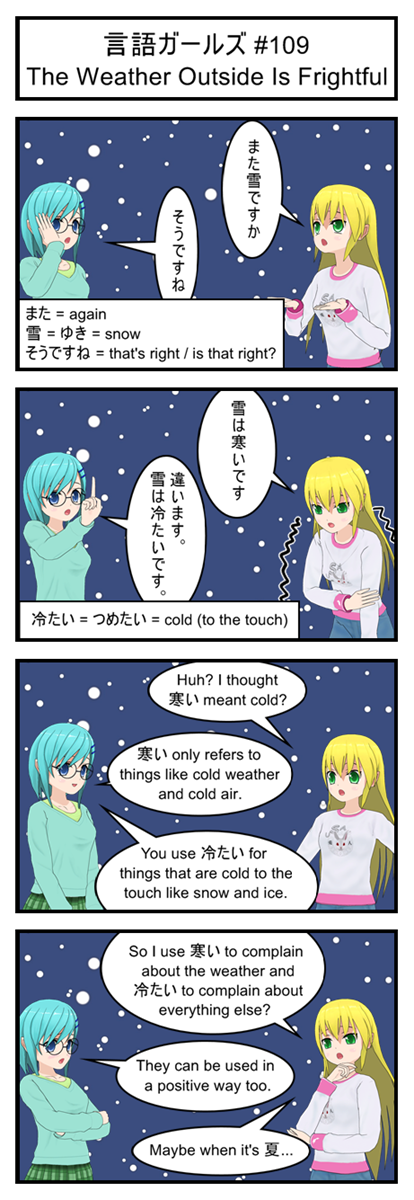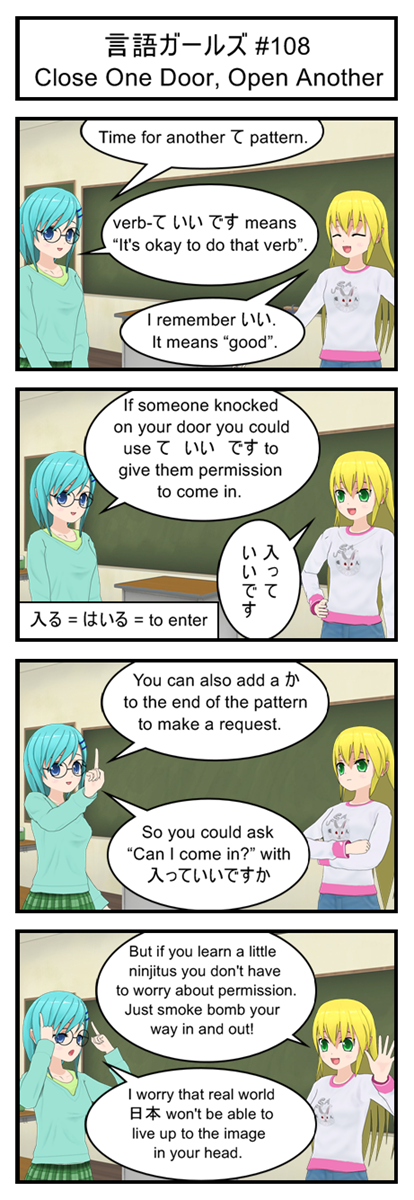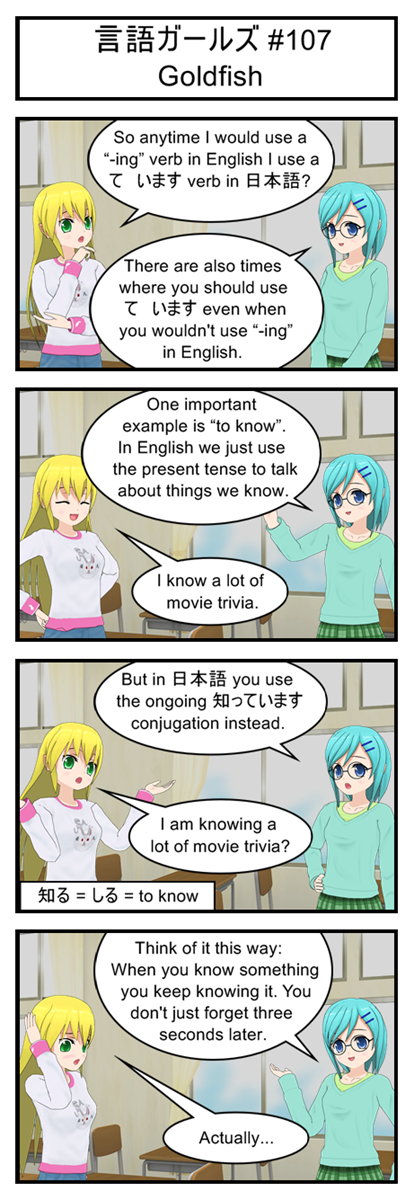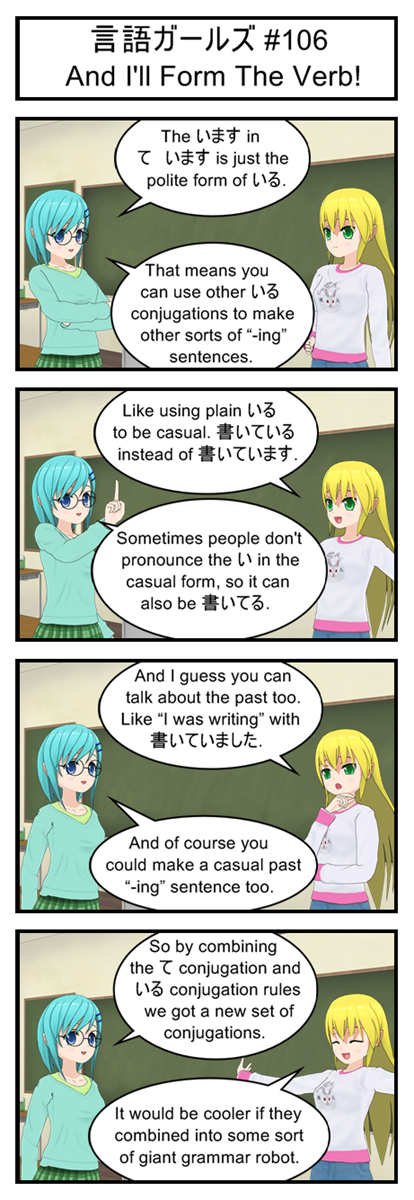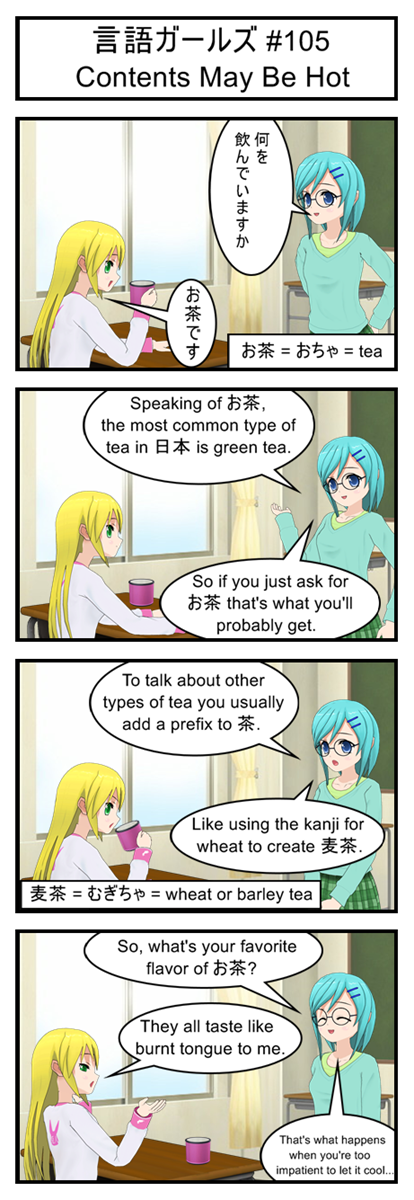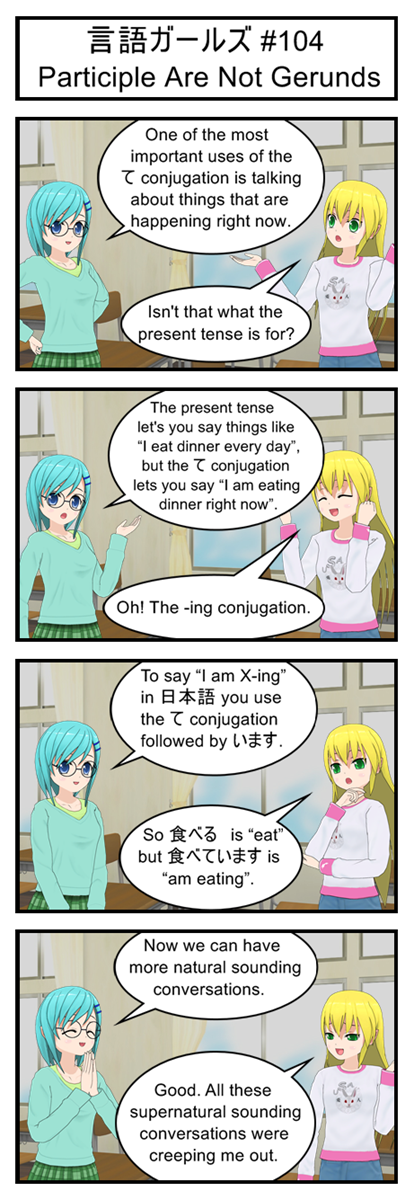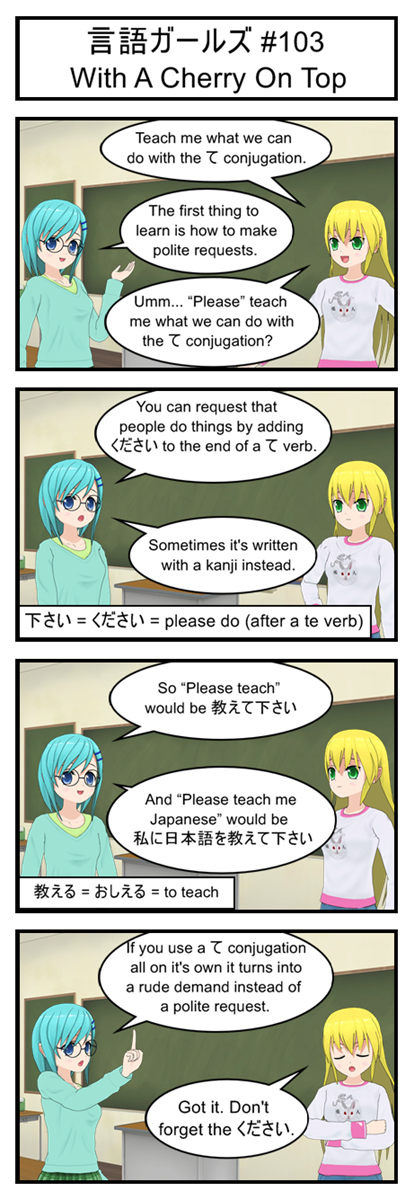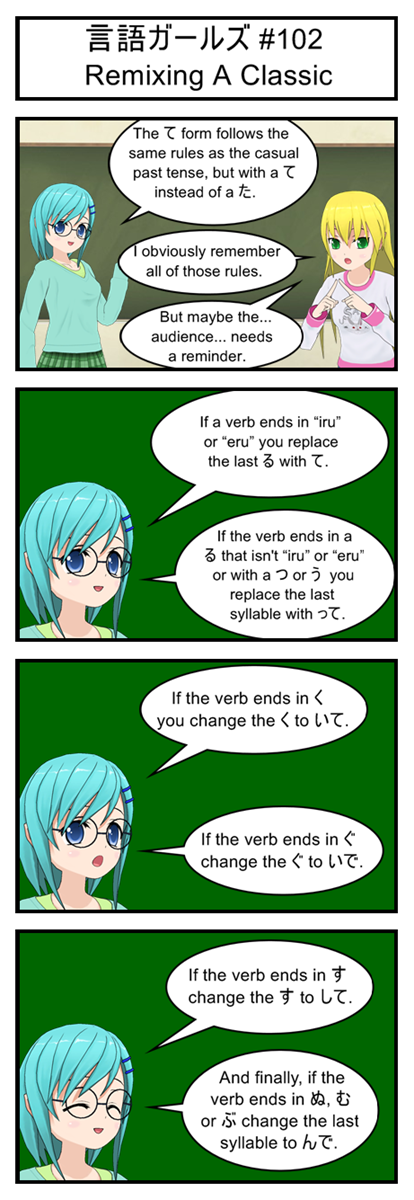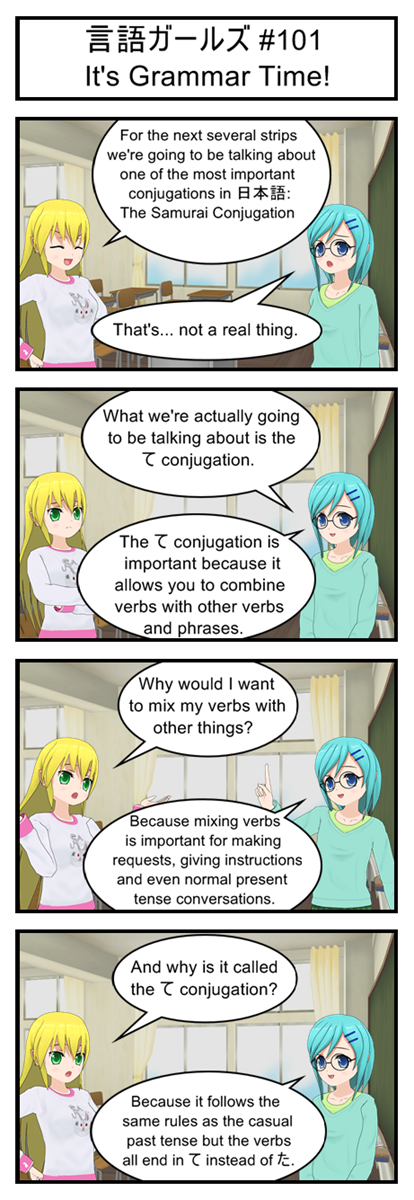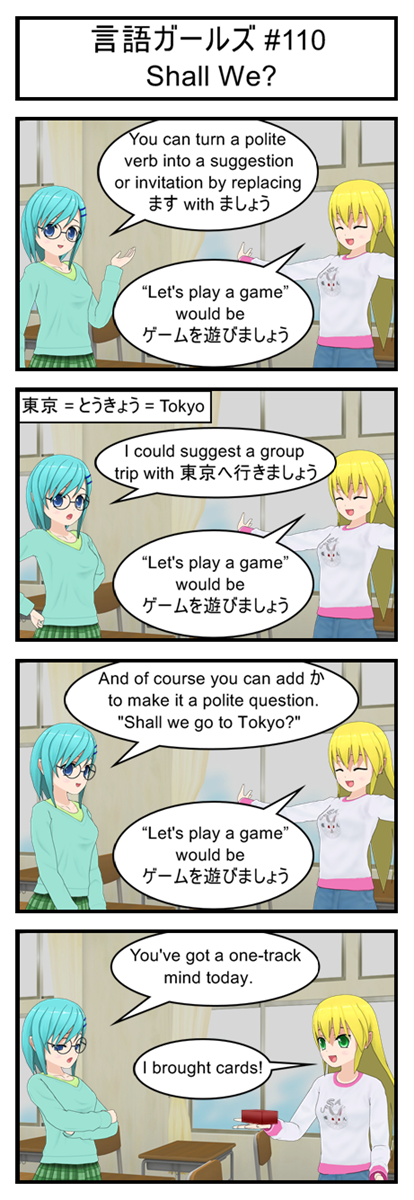
“mashou” is useful because it let’s you create very mild commands and suggestions.
Instead of coming right out and saying “I want to go to McDonalds” you can politely suggest “Let’s go to McDonald’s” or even more mildly “Shall we go to McDonald’s?”
So listen carefully the next time a movie or show has a scene where characters are debating what to do next. Odds are good you’ll hear a polite character making suggestions with “mashou”.
Vocabulary
東京 = とうきょう = Tokyo
Transcript
言語ガールズ #110
Shall We?
Blue: You can turn a polite verb into a suggestion or invitation by replacing ます with ましょう
Yellow: “Let’s play a game” would be ゲームを遊びましょう
Blue: I could suggest a group trip with 東京へ行きましょう
Yellow: “Let’s play a game” would be ゲームを遊びましょう
Blue: And of course you can add か to make it a polite question.
Blue: “Shall we go to Tokyo?” with 行きましょうか
Yellow: “Let’s play a game” would be ゲームを遊びましょう
Blue: You’ve got a one-track mind today.
Yellow: I brought cards!
